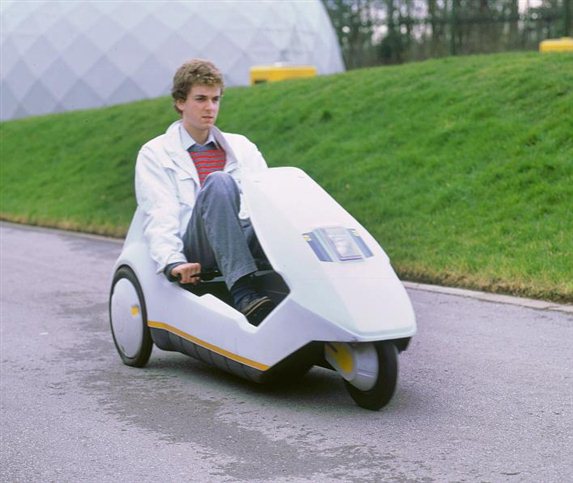The National Motor Museum at Bealieu is celebrating the 30th anniversary of the launch of one of the most unusual and iconic, if ultimately unsuccessful vehicles ever released in the UK.
The attraction will be exhibiting a Sinclair C5 which was donated to the museum by its creator, the inventor and entrepreneur Sir Clive Sinclair.
The electric-powered tricycle first went on sale on the 10th January 1985 with a price tag of £399, and was hailed as ‘a new power in personal transport’. The single-seat Sinclair C5 used a combination of pedal power and an electric motor for propulsion, and could reputedly be driven for five miles on just a penny’s worth of electricity. The three-wheeled C5 could reach 15mph, with single-button operation for braking and acceleration on the handlebars located beneath the drivers knees. The chassis had been developed by Lotus Cars, and the C5 had the added bonus of being legal for anyone over the age of 14 to drive, with no driving licence required. It’s inventor predicted sales of up to 100,000 units per year.
However, the innovative Sinclair C5 was doomed to failure, with drivers feeling vulnerable and exposed on the road in the open-top, open-sided machine, even with the optional extra windcheater poncho. The 20 mile range also limited its appeal, while the fact it was built at Hoover’s Merthyr Tydfil factory sparked incorrect rumours that the C5 was powered by a washing machine motor.
In the end, just 9,000 Sinclair C5s were built and the company had collapsed by the end of the year, a rare miss for Sir Clive Sinclair whose previous innovations included the ZX range of affordable home computers, the digital watch, the world’s first slim-line pocket calculator, and the world’s first pocket television.
Click here to sign up for our monthly newsletter
| Popular news stories |
||||||
 |
 |
 |
 |
|||








